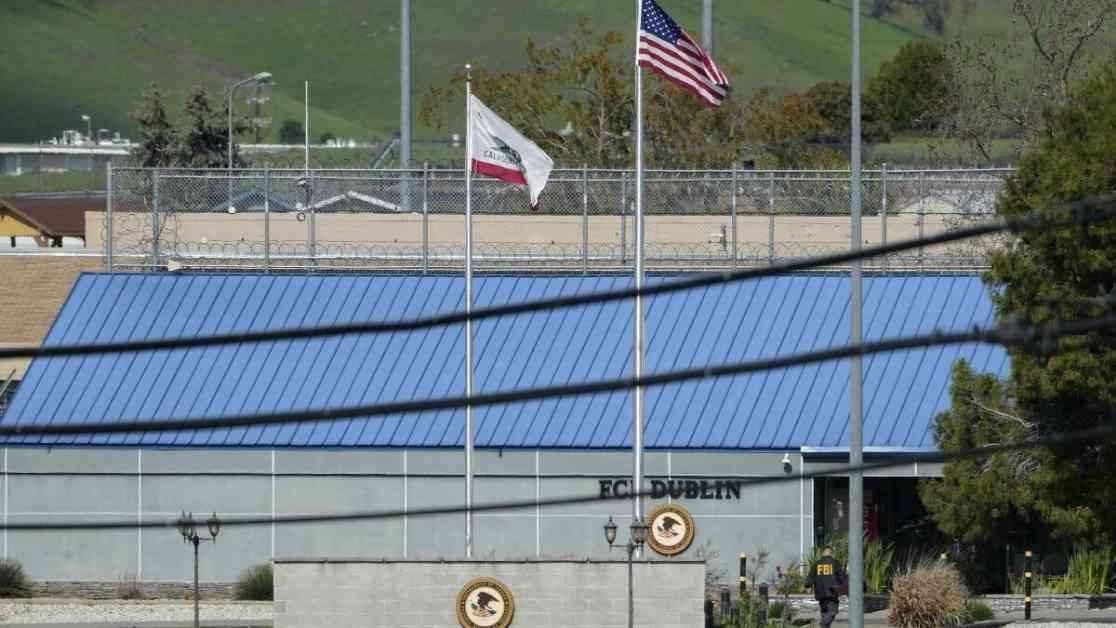The Trump administration has stirred controversy with plans to potentially send immigrants facing deportation to a former federal prison dubbed the “rape club” due to rampant sexual abuse. Federal prison union officials revealed this alarming proposal, raising concerns about the future of the facility located about 20 miles east of Oakland, the Federal Correctional Institution in Dublin. This prison was shut down last year after several correctional officers and the former warden were implicated in sexually abusing female inmates.
The American Federation of Government Employees Council of Prison Locals No. 33, representing federal prison workers, recently submitted an information request to the prison system regarding facility closures. In the midst of this inquiry, union leaders expressed apprehensions about the infamous facility’s potential transformation for immigrants facing deportation.
John Kostelnik, the Western region vice president for the correctional workers union, emphasized concerns about the possible shift in focus for federal prisons from their primary mission of ensuring community safety from dangerous criminals to housing migrants. The Bureau of Prisons confirmed its involvement in housing migrant detainees but offered little insight into the detainees’ legal status or future housing locations.
ICE, on the other hand, acknowledged the need for expanded detention capacity due to enhanced enforcement operations. However, specific details regarding the detention requirements and locations remained undisclosed. This recent development comes amidst the Trump administration’s escalated immigration enforcement efforts, vowing to deport millions of individuals back to their home countries.
While ICE typically detains individuals in processing centers, private prison facilities, and local jails, the administration’s heightened deportation goals have prompted officials to explore unconventional detention options. The U.S. military began transporting detained migrants to Guantanamo Bay, Cuba, and El Salvador’s prisons were suggested as potential detention sites, demonstrating the administration’s unorthodox approach to immigration management.
The Trump administration’s directive to the Bureau of Prisons to prepare for increased inmate capacity echoed a similar scenario during the first term. Federal prisons in multiple states were tasked with accommodating over 1,600 immigrants, including asylum seekers, resulting in legal challenges regarding due process rights. The chaotic conditions experienced by detainees and prison staff during this period underscored the challenges posed by housing migrants in federal correctional facilities.
The prospect of detaining migrants in U.S. federal prisons has already materialized in facilities like the Metropolitan Detention Center in Los Angeles, where Homeland Security Investigations introduced a group of migrants from Africa. The lack of clear directives for managing detained migrants alongside typical federal prisoners has created logistical challenges for prison staff, hinting at potential operational hurdles in the future.
Federal prison officials are mobilizing resources to accommodate the influx of ICE detainees, urging staff to consider temporary reassignments to manage the growing population. This reorganization underscores the strain on an already understaffed federal prison system, highlighting the need for effective contingency plans to address potential challenges in housing and managing detained migrants.
As the debate surrounding the administration’s immigration policies continues to intensify, the impact on federal prisons and their staff remains a critical concern. The evolving landscape of immigration enforcement raises questions about the ethical implications and operational feasibility of housing migrants in federal correctional facilities, illuminating the complex intersection of immigration policy and criminal justice practices.
The potential consequences of housing immigrants in former federal prisons underscore the multifaceted challenges faced by both prison workers and detainees, amplifying the urgency for transparent communication and comprehensive planning to safeguard the well-being of all individuals involved. The responsibility of balancing national security concerns with humanitarian considerations presents a formidable task for policymakers and law enforcement agencies, necessitating a nuanced and compassionate approach to address the diverse needs of a vulnerable population.


